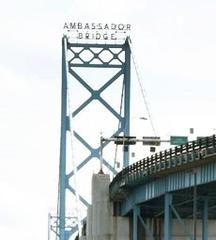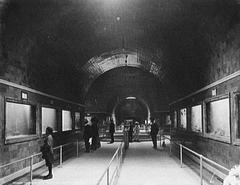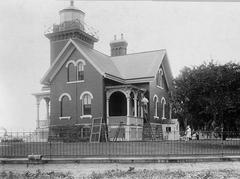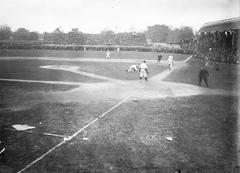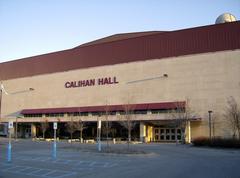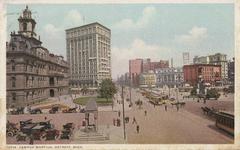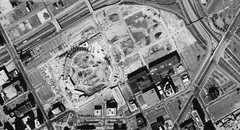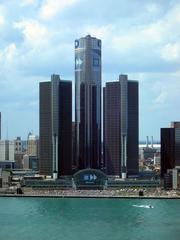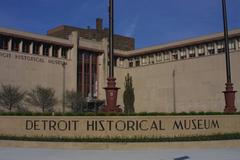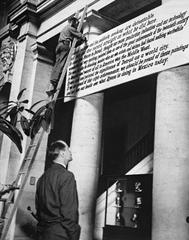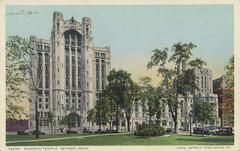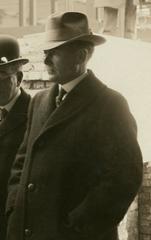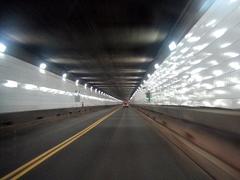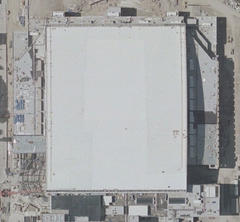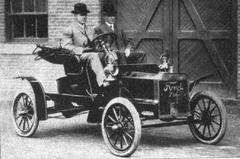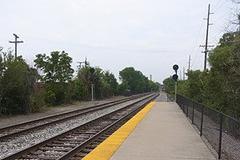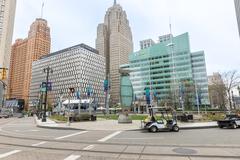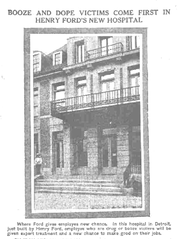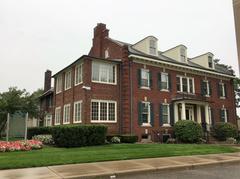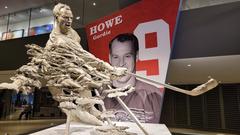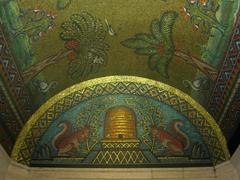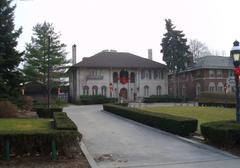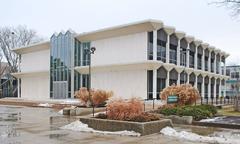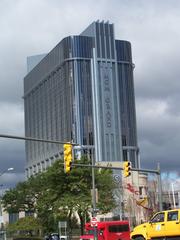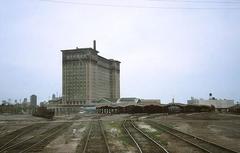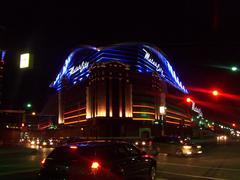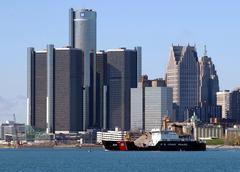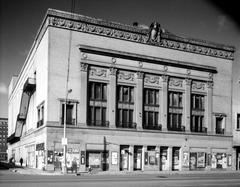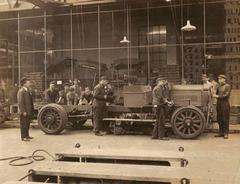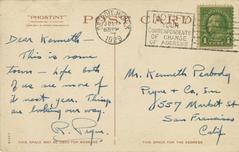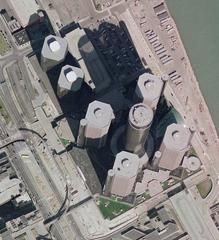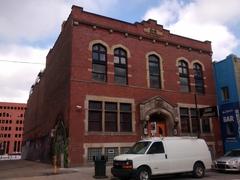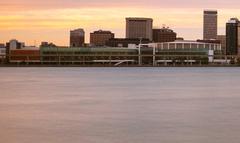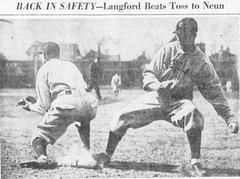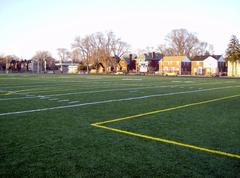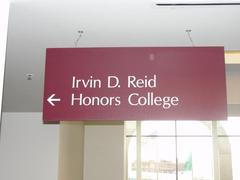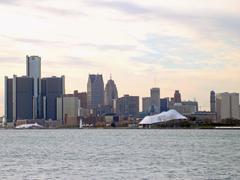
Tushiyah United Hebrew School – Scott Memorial Methodist Episcopal Church
Tushiyah United Hebrew School – Scott Memorial Methodist Episcopal Church Detroit: Visiting Hours, Tickets, and Historical Sites Guide
Date: 04/07/2025
Introduction
Nestled in Detroit’s vibrant Cultural Center, the Tushiyah United Hebrew School – Scott Memorial Methodist Episcopal Church stands as a powerful symbol of the city’s multicultural evolution. Located at 609 East Kirby Avenue (sometimes listed as East Kirby Street), this historic site—now known as the Kirby Center Lofts—reflects Detroit’s early 20th-century Jewish immigrant roots and the later flourishing of its African American Methodist Episcopal community. Constructed in 1922, the building embodies a rich legacy as both an educational and religious hub, bridging pivotal chapters in Detroit’s urban history (Detroit Historic Report; Detroit1701.org).
Today, while the building has been adaptively reused as a residential complex, its preserved exterior and historical markers make it a compelling stop for those interested in Detroit’s heritage. This guide provides detailed information on the site’s history, visitor access, nearby attractions, and practical tips to help you experience one of Detroit’s most significant cultural landmarks.
Table of Contents
- Historical Background
- Visiting the Historic Site
- Frequently Asked Questions (FAQ)
- Visitor Experience & Practical Tips
- Conclusion & Call to Action
- References
Historical Background
Founding and Educational Role
“Tushiyah” means “wisdom” or “insight” in Hebrew, reflecting the institution’s mission to provide comprehensive Jewish education in early 20th-century Detroit (Detroit City Code). Built in 1922 and designed by Isadore M. Lewis, the school became the headquarters of the United Hebrew Schools (UHS), serving a growing Jewish community in the Art Center/Midtown area near the Detroit Institute of Arts (Shtetlhood).
At its peak, the institution accommodated up to 1,500 children and featured an auditorium with seating for 2,000, hosting community events and adult education programs like the Philomathic Debating Club (Detroit Historic Report, p. 4). By 1929, the UHS system included four additional schools, reaching approximately 1,700 students citywide (Detroit Historic Report, p. 3).
Architectural Features
The building exemplifies early 20th-century institutional architecture, blending Prairie and Commercial styles. Notable features include a two-story, steel-framed brick structure with cast stone panels, limestone sills, decorative brickwork, and an asymmetrical façade with a gabled parapet (Detroit City Code). Inside, the sanctuary boasted vaulted ceilings, original pews, and elements that reflected both Jewish and Christian iconography.
Transition to Scott Memorial Church
Demographic changes in the late 1920s led to a northward migration of the Jewish community, and the local neighborhood became predominantly African American. In 1929, the building was sold to the Scott Memorial Methodist Episcopal Church, Detroit’s first African American congregation within the denomination (Detroit Historic Report, p. 4). The church served as a significant spiritual and community center for decades, with a single-story addition built in the 1950s to create a courtyard (Detroit City Code).
Preservation and Adaptive Reuse
By the early 21st century, the building was converted into apartments known as Kirby Center Lofts (Shtetlhood). Its dual heritage is officially recognized by the City of Detroit Historic District designation, ensuring its unique story is preserved for future generations (Detroit City Code).
Visiting the Historic Site
Visiting Hours & Accessibility
The Kirby Center Lofts is a private residential complex and does not offer public interior tours. However, the exterior and historical markers can be viewed from the sidewalk at any time. The site is located in a walkable, safe Midtown neighborhood and is wheelchair accessible from the street.
Ticketing & Tours
- Admission: No ticket or admission fee is required to view the exterior.
- Guided Tours: There are currently no official guided tours, but local organizations occasionally include the site in neighborhood walking tours (Preservation Detroit).
Travel Tips & Nearby Attractions
- Parking: Street parking is available, with additional paid lots in the area.
- Public Transportation: The QLINE streetcar and DDOT buses provide convenient access.
- Nearby Landmarks:
- Detroit Institute of Arts
- Charles H. Wright Museum of African American History
- Wayne State University
- Midtown’s cafes and shops
Frequently Asked Questions (FAQ)
Q: Can I enter the building?
A: No, interior access is restricted to residents; exterior viewing is open to the public.
Q: Are guided tours available?
A: No official tours are offered, but some local history tours feature the site.
Q: Is the building wheelchair accessible?
A: The exterior is accessible from the street; interior accessibility is not available.
Q: Is there parking?
A: Yes, street parking and nearby paid lots are available.
Q: What other attractions are nearby?
A: The Detroit Institute of Arts, Charles H. Wright Museum, Detroit Public Library, and Midtown Detroit’s vibrant cultural venues.
Visitor Experience & Practical Tips
- Photography: The building’s decorative brickwork, limestone detailing, and plaques are ideal for photography, especially in morning or late afternoon light.
- Best Time to Visit: Daylight hours are optimal for appreciating the architecture and exploring the neighborhood.
- Safety: The area is generally safe and well-trafficked, especially during the day.
- Accessibility: While the building’s interior is not open, sidewalks and curb cuts make exterior viewing accessible for most visitors.
- Special Events: Occasionally, local historical organizations may host open houses or special events; check Detroit Historical Society events for updates.
Conclusion & Call to Action
The Tushiyah United Hebrew School – Scott Memorial Methodist Episcopal Church is a powerful testament to Detroit’s layered cultural history, reflecting the resilience and adaptability of its communities. Although public access is limited to the exterior, the site’s well-preserved façade and markers offer a meaningful touchpoint for anyone interested in the city’s Jewish, African American, and architectural heritage.
To make the most of your visit:
- Plan a walking tour of Midtown Detroit to explore additional historic sites.
- Check local historical society websites for special events or open houses.
- Download the Audiala app for guided audio tours and interactive maps.
For more on Detroit’s history, follow the Detroit Historical Society, Preservation Detroit, and Visit Detroit.
References
- Detroit Historic Report, 2018, City of Detroit
- Shtetlhood, Tushiyah United Hebrew School
- Detroit City Code, Cultural District Designation
- Detroit1701.org, Tushiyah United Hebrew School
- Detroit Historical Society
- Detroit Tourism Website
- Preservation Detroit

